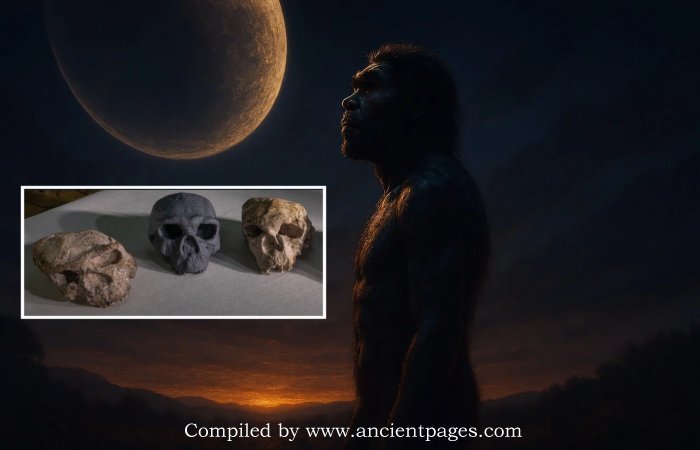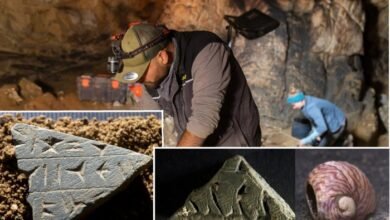Yunxian 2 Skull Reveals Homo Sapiens Emerged One Million Years Ago – 400,000 Years Earlier Than Previously Thought

Jan Bartek – AncientPages.com – A recent groundbreaking study has proposed that Homo sapiens may have started to emerge over a million years ago, extending our species’ origins by 400,000 years beyond previous genetic estimates. Central to this discovery is the Yunxian 2 fossil, a one-million-year-old cranium initially classified as Homo erectus. New analysis reclassifies it within the Asian longi clade, closely related to Denisovans.
This research reshapes our understanding of human evolution: over the past 800,000 years, most large-brained humans can be traced back to five major branches: Asian Erectus, Heidelbergensis, Longi, Sapiens, and Neanderthalensis. Importantly, these groups began diverging from each other over a million years ago, indicating that our origins are older and more complex than previously thought.
However, the newly reconstructed ancient human skull from central China suggests that our species began diverging from a common ancestor much earlier than previously believed. Published in Science by an international team led by researchers from Fudan University and the Chinese Academy of Sciences, in collaboration with Prof. Chris Stringer of the London Natural History Museum, their work analyzes Yunxian 2.
In 1990, skulls discovered in China underwent reconstructions, revealing significant insights. The skull positioned in the middle has been identified as belonging to the species Homo longi. This species was at a comparable level of development to both Neanderthals and Homo sapiens, providing valuable information about human evolution and diversity during that era. Credit: Mr. Guanghui Zhao
Discovered in Hubei Province in 1990 and initially difficult to interpret due to its crushed state but believed to be Homo erectus based on age—Yunxian 2 was restored using advanced CT scanning and virtual reconstruction techniques. The team compared it with over 100 other fossil specimens.
Their findings reveal Yunxian 2 possesses both primitive traits like a large braincase similar to Homo erectus and derived features akin to later species such as Homo longi (‘Dragon Man’) and Homo sapiens.
“Our research reveals that Yunxian 2 is not Homo erectus, but an early member of the longi clade and linked to the Denisovans. This changes a lot of thinking because it suggests that by one million years ago, our ancestors had already split into distinct groups, pointing to a much earlier and more complex human evolutionary split than previously believed,” Professor Chris Stringer, anthropologist and research leader in Human Evolution at the Natural History Museum, London, explained.
The skull, discovered more than 30 years ago, has recently been conclusively identified by researchers. This breakthrough in identification marks a significant advancement in understanding the species to which the skull belongs. Credit: Mr. Guanghui Zhao
The study implies there may be earlier members of heidelbergensis, Neanderthalensis,sapiens,and longi lineages yet undiscovered or unrecognized. It also raises questions about where these lineages originated since some African fossils couldn’t be included, and genetics research suggests more complex ancestry for Homo sapiens.
“To answer these questions, a reliable phylogenetic framework is essential, and the reconstruction of Yunxian 2 is a crucial step in building it,” Professor Xijun Ni, who led the project, said.
See also: More Archaeology News
The team constructed an extensive phylogenetic tree for genus Homoto estimate divergence times for each clade accurately.
Professor Stringer continued, “Yunxian 2 may help us resolve what’s been called the ‘Muddle in the Middle,’ the confusing array of human fossils from between 1 million and 300,000 years ago. Fossils like Yunxian 2 show just how much we still have to learn about our origins.”
The study was published in the journal Science
Written by Jan Bartek – AncientPages.com Staff Writer







